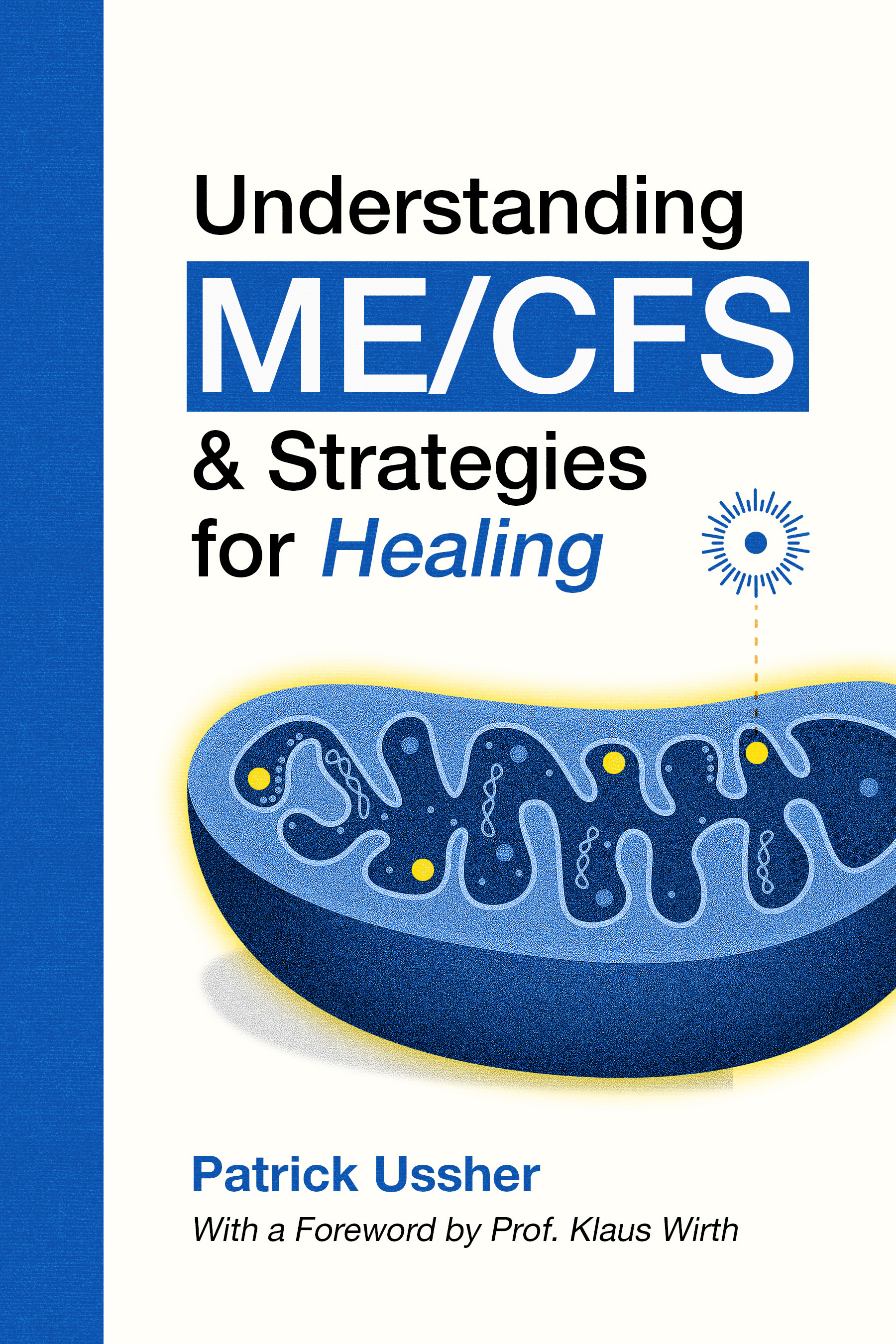
NB - NOT AVAILABLE FOR FRENCH and GERMAN - ONGOING TRANSLATIONS
Has the mystery of ME/CFS finally been solved?
For decades, Myalgic Encephalomyelitis / Chronic Fatigue Syndrome (ME/CFS) has remained a medical enigma—misunderstood, misdiagnosed, and often dismissed. But breakthrough research might finally be changing that.
In this accessible and hopeful guide, ME/CFS patient Patrick Ussher distills the groundbreaking work of Professors Klaus Wirth and Carmen Scheibenbogen, who have proposed a compelling unifying model of ME/CFS. This new understanding brings together multiple dysfunctions—low blood volume, microclots, mitochondrial damage, autoimmunity, and more—into one interconnected cycle. It may, at last, explain why so many suffer from post-exertional malaise, brain fog, and relentless fatigue.
More than just theory, this book discusses healing strategies:
Breathing techniques to improve oxygenation
Ancestral nutrition and gut repair
Microclot treatments
Blood-washing procedures like HELP Apheresis & Immunoadsorption
The Perrin technique
The strengths & limitations of neuroplasticity ('brain retraining')
Promising future medications—especially the new ‘Mitodicure’ pill, which could become the first drug specifically for ME/CFS
Patrick also shares his own story of living with ME/CFS and what has helped him most—physically and emotionally. His goal is simple: to empower fellow patients with knowledge, practical tools, and renewed hope.
Whether you have ME/CFS or Long Covid, this book will help you understand your illness—and imagine a life beyond it.
Includes a foreword by Prof. Klaus Wirth who is developing the ‘Mitodicure’ pill.
Genre: HEALTH & FITNESS / Diseases / Chronic Fatigue SyndromeBook was published in early Feb 2025 and - by early July - has sold around 700 copies.
It has been featured in The Irish Times (https://www.irishtimes.com/health/your-wellness/2025/06/05/mecfs-is-there-a-comprehensive-explanation-for-this-long-misunderstood-illness/) and reviewed in The Medical Independent (https://www.medicalindependent.ie/life/book-review/an-important-contribution-to-understanding-me-cfs/)
If a global state of reduced blood perfusion has become established, the whole body will work less well. The muscles, brain and otherorgans will all struggle. But the negative effect will even be felt right
down at the cellular level. The human body has around forty trillion cells. These are constantly reacting to what is happening elsewhere in the body and if those cells are suddenly receiving less oxygen and blood supply, then they will start to become dysfunctional as well. This represents one reason why cellular function becomes impaired in ME/CFS. However, as we shall see in this chapter, the cells can also become dysfunctional for additional reasons as well.
This cellular dysfunction is key to understanding ME/CFS. To give the most important example, the healthy functioning of our skeletal muscle cells is essential for our capacity to take exercise. Muscle activation, strength and endurance all depend upon the physiologically normal activity of the cells situated within the muscles. If the cells are happy then the muscles are more likely to be happy as well. On the other hand, if the cells become dysfunctional, there then develops yet another component to the exercise intolerance and post-exertional malaise within ME/CFS.
The idea that there exists cellular dysfunction in ME/CFS is not new. It has long been known that ME/CFS patients have reduced levels of Adenosine Triphosphate (ATP), the key ‘currency’ for cellular energy in the body.7 This is connected to the reduced levels and dysfunctional nature of the mitochondria in ME/CFS, the organelles (‘miniscule organs’) which play an essential role in the production of cellular energy.